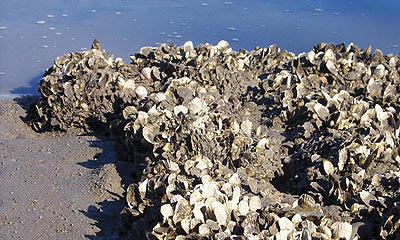Ocean acidification inhibits oyster shell formation
DOI: 10.1063/PT.3.2071
The oyster industry in the Pacific Northwest has been suffering from high mortality rates in oyster seeds—young oysters ready for transplanting to an oyster bed—and those losses have been linked to increased ocean acidity from higher carbon dioxide levels. The frequently cited explanation is that the acidic water corrodes and dissolves the shells. Now George Waldbusser and colleagues at Oregon State University have uncovered an additional cause, one rooted in kinetics and energetics: At elevated CO2 concentrations, mineral precipitation requires significant energy input at a stage of an oyster’s life—newly fertilized larva—when energy is limited. To understand the relative contributions that food and dissolved carbon in seawater make to the growth and composition of oyster seeds, the team measured the carbon-isotope composition and the proportions of shell, lipids, and organic matter in Pacific oysters over the course of the first few weeks following fertilization. By the second day, the larvae had formed calcified shells that accounted for more than 90% of the total oyster mass. Precipitating so much calcium carbonate so quickly requires energy, and, argue the authors, the expenditure is higher at higher CO2 levels. Yet as the isotope studies confirmed, larvae draw solely from the reserves originally within the egg when making that initial shell—they don’t start to feed on their surroundings until after it is formed. Faced with a limited energy budget, the larvae can find the kinetic hurdle of shell formation increasingly difficult to overcome in acidic water, even if the conditions aren’t yet corrosive. (G. G. Waldbusser et al., Geophys. Res. Lett. 40, 2171, 2013, doi:10.1002/grl.50449


